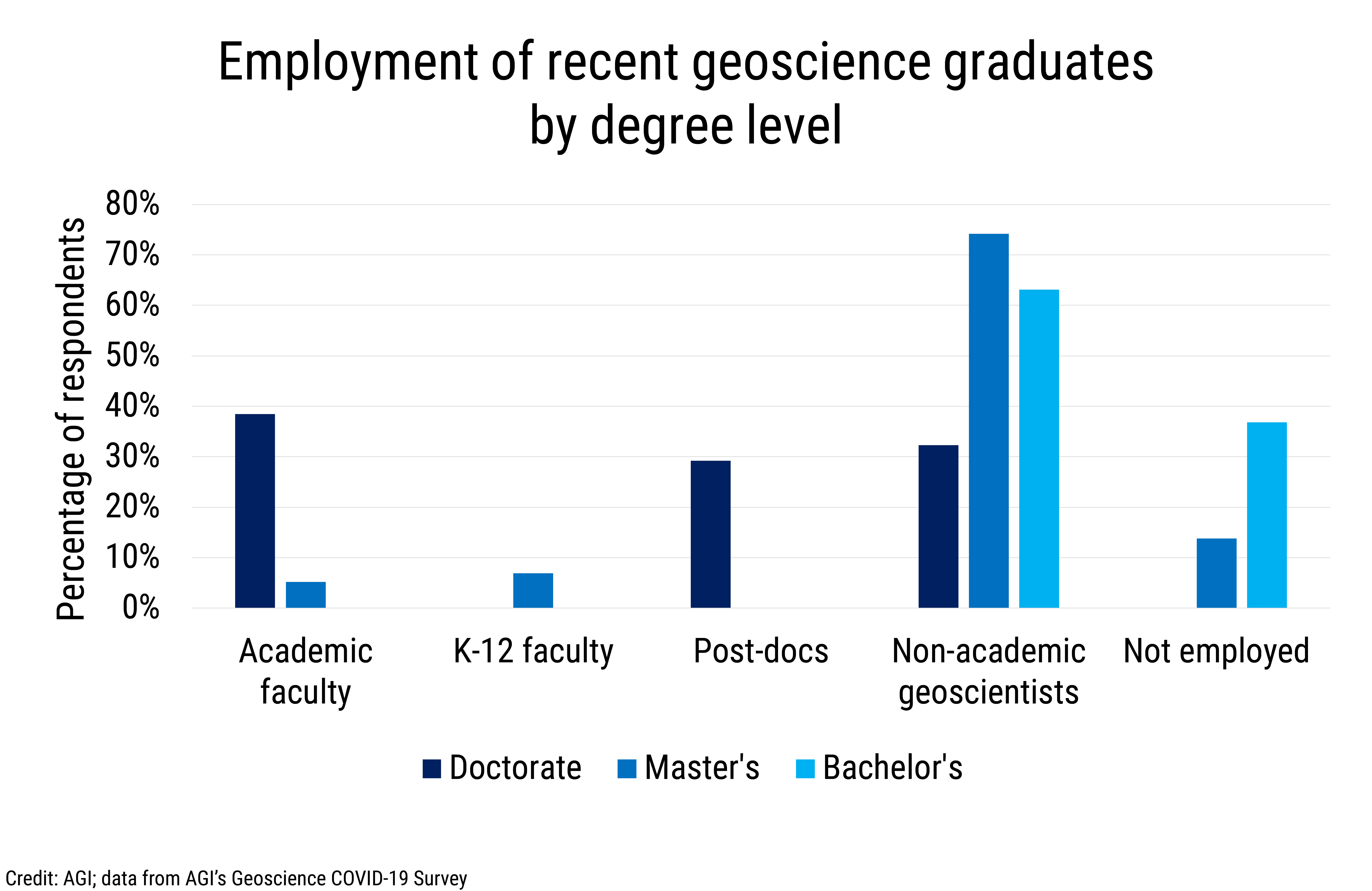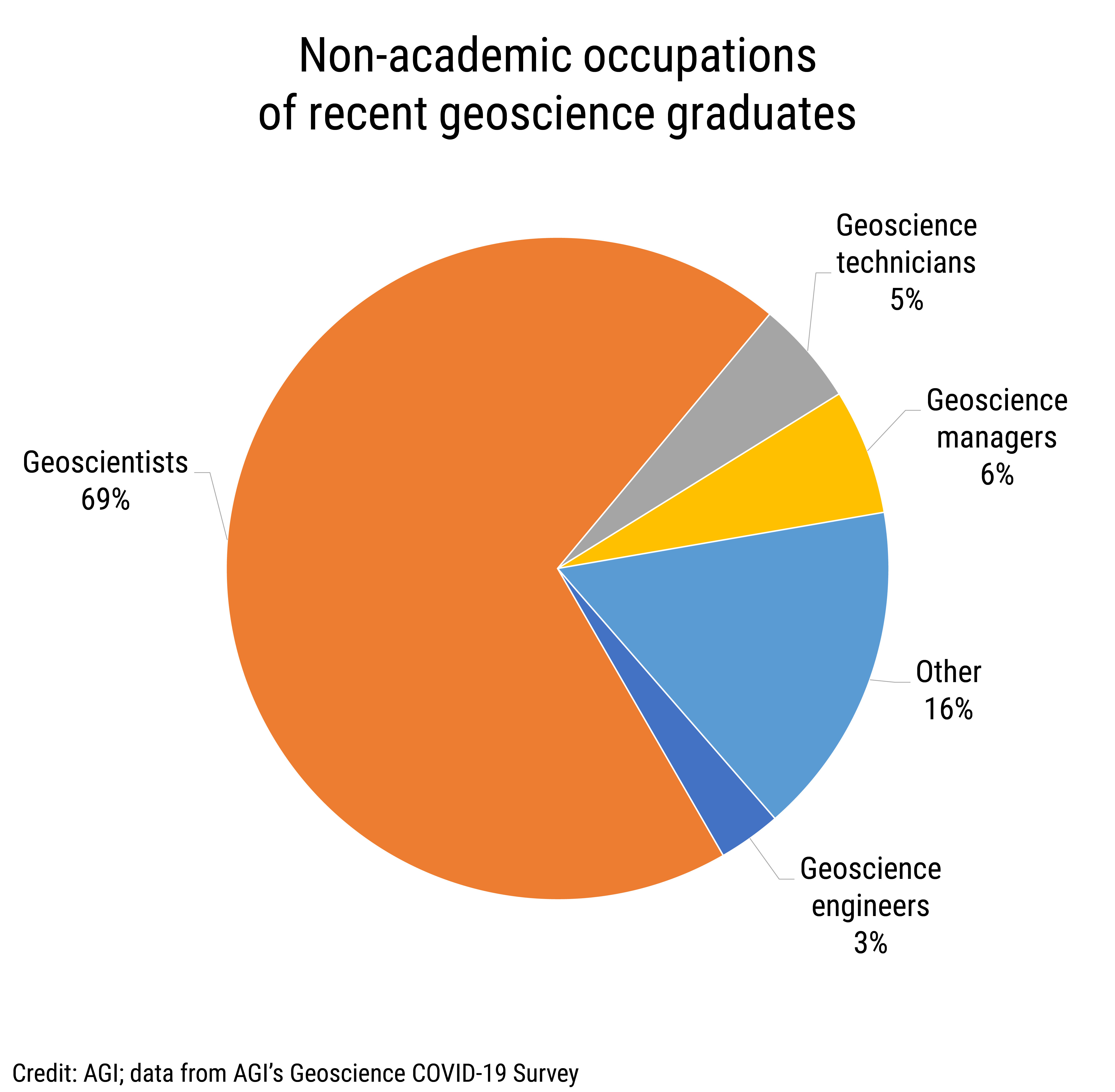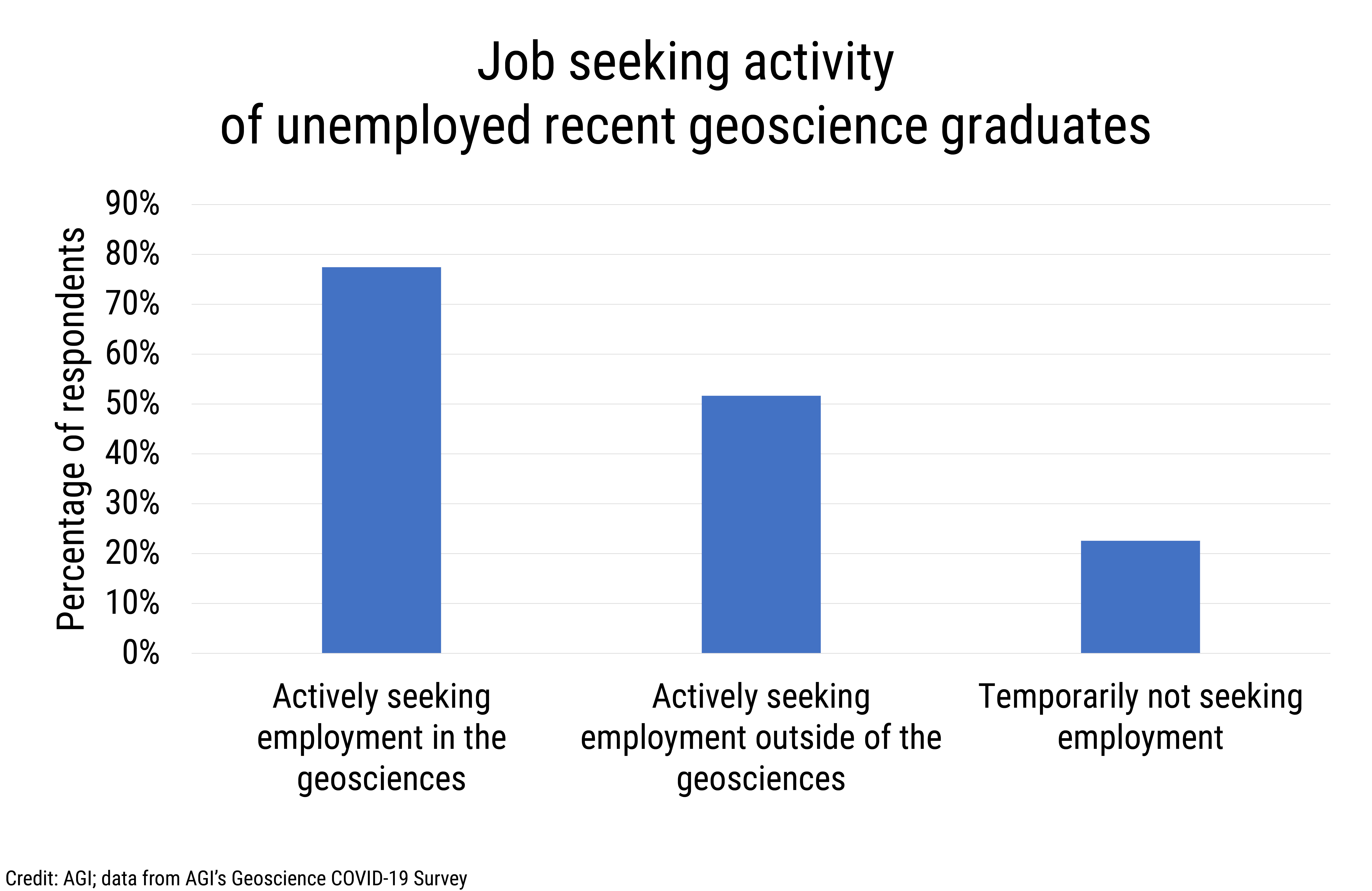Data Brief 2020-010 | July 3, 2020 | Written and compiled by Leila Gonzales and Christopher Keane, AGI
Download Data Brief
COVID-19 and Employment of Recent Geoscience Graduates
Between February and June 2020, the employment status of recent
geoscience graduates varied greatly based on when graduates earned their
degree and based on degree level. While 96% of graduates who earned
their degree between 2014-2018 were employed, only 59% of graduates who
earned their degree between 2019-2020 reported the same. Recent
geoscience doctorates were employed as academic faculty, post-doctoral
fellows or non-academic geoscientists, and the majority of master’s and
bachelor’s graduates were employed as non-academic geoscientists.

Data Brief 2020-010 chart 01: Employment of recent geoscience graduates by graduation year (credit: AGI; data from AGI's Geoscience COVID-19 Survey)
AGI

Data Brief 2020-010 chart 02: Employment of recent geoscience graduates by degree level (credit: AGI; data from AGI's Geoscience COVID-19 Survey)
AGI
Recent geoscience graduates who were employed in non-academic
geoscience occupations were predominantly employed as geoscientists,
geoscience managers, geoscience technicians, or geoscience engineers.
Other non-academic occupations reported by geoscientists included
computer software and support, industrial engineering, educational and
library operations, policy analyst positions, administrative support,
and agriculture.

Data Brief 2020-010 chart 03: Non-academic occupations of recent geoscience graduates (credit: AGI; data from AGI's Geoscience COVID-19 Survey)
AGI
Recent geoscience graduates who were unemployed were either bachelor’s
graduates (74%) or master’s graduates (26%), and 81% of all unemployed
recent graduates earned their degrees between 2019 and 2020. Unemployed
recent graduates, however, are predominantly seeking employment in the
geosciences (77%), and just over half are also seeking employment
outside of the geosciences.
The most common reasons for seeking employment outside of the
geosciences included a lack of job opportunities within the geosciences
and not having adequate training or skills for available geoscience
jobs. Other reasons mentioned included not having the educational
pre-requisites for available geoscience jobs, better opportunities in
another field, and an inability to change location to take a geoscience
job.

Data Brief 2020-010 chart 04: Job seeking activity of unemployed recent geoscience graduates (credit: AGI; data from AGI's Geoscience COVID-19 Survey)
AGI
We will continue to provide current snapshots on the impacts of COVID-19
on the geoscience enterprise throughout the year. For more information,
and to participate in the study, please visit:
www.americangeosciences.org/workforce/covid19
Funding for this project is provided by the National Science Foundation
(Award #2029570). The results and interpretation of the survey are the
views of the American Geosciences Institute and not those of the
National Science Foundation.